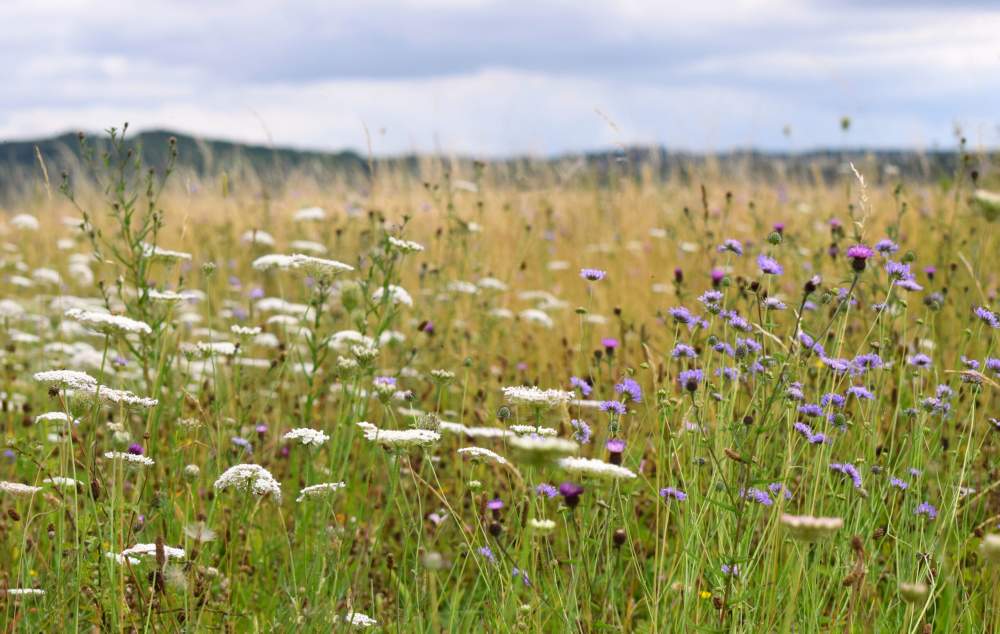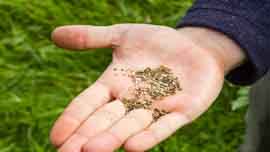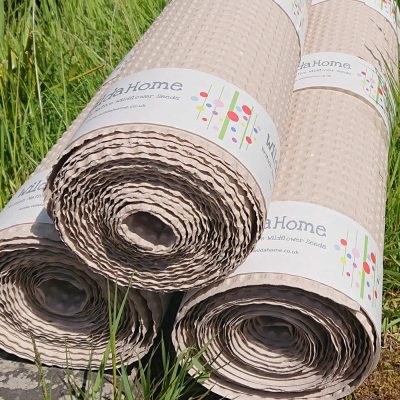Wildflowers of the South Downs: A Comprehensive Guide to Soil Types and Sowing Techniques
Hey there, nature lover! If you’ve been thinking about starting your wildflower meadow in the South Downs, you’ve come to the right place. This comprehensive guide will give you the inside scoop on the best wildflowers to sow for your location, tips for preparing the perfect soil, and techniques to help your meadow thrive for years. We’ll explore how to select wildflowers based on the soil and sunlight conditions of your plot of land. You’ll learn how to weed, sow, and maintain your wildflower paradise so you can enjoy colourful blooms from spring through fall. By the end of this guide, you’ll have the confidence and know-how to start your wildflower haven. So please put on your gardening gloves, grab some seeds, and let’s get started! The South Downs is waiting for your wildflower magic.
An Overview of the South Downs Landscape and Soil Types
The South Downs landscape features rolling chalk hills, ancient woodlands and open grasslands. The thin, alkaline soil is low in nutrients but supports a variety of native wildflowers.
The chalk grasslands are the most iconic, home to delicate orchids, cowslips and rare chamomile. To establish wildflowers in your garden, preparing the soil is essential. Clear the area of weeds and dig over compacted soil, breaking up any large clumps. Add compost or topsoil for heavy clay or sandy soils to improve drainage and structure.
For chalky or limestone soils, add grit or sharp sand. Aim for a refined, crumbly texture. Leave the soil uneven with pockets and troughs where seeds can settle.
Once prepared, sow seeds in autumn or spring. Scatter them thinly onto moist soil and do not cover them, as most need light to germinate. Gently rake over and tamp down using your hands or feet. Water regularly, especially in dry weather.
Many wildflowers are hardy and low-maintenance. However, until established, check for weeds which compete for light and nutrients. Carefully hoe around plants or hand weed. After flowering, leave seed heads standing over winter to provide food and habitat for wildlife. In spring, cut back stems to make way for new growth.
With the right soil conditions and care, you’ll have a flourishing wildflower meadow in no time. The delicate blooms and buzz of pollinators will transform your garden into a little slice of South Downs heaven.
Choosing the Right Wildflower Species for Chalk Grassland
To get the most vibrant wildflower meadow, you’ll want to choose flowers that thrive in chalky, alkaline soil. Species native to grasslands in southern England are ideal, as they’ve adapted over centuries to flourish in the thin, nutrient-poor soil.
Some of the best options for chalk grassland include:
- Cowslips, with their delicate yellow blooms, are a classic. They spread readily and provide an early spring pop of colour.
- Oxeye daisies, with their familiar white petals and yellow centres, create a sea of flowers in early summer. They reseed freely, so you’ll have them for years.
- Musk mallow, with pale pink hibiscus-like flowers, attracts pollinators and seeds around your meadow.
- Bird’s-foot trefoil, a pea family member with egg-yolk yellow blooms, fixes nitrogen in the soil and provides food for butterflies.
- Wild marjoram, with purple flower spikes, has an aromatic scent and flavour. It attracts wildlife and was used historically as a medicinal herb.
- Wild thyme forms fragrant pink mats of flowers in midsummer. It’s ideal for rockeries and path edgings in your meadow.

By choosing a variety of long-blooming perennials, biennials, and self-seeding annuals adapted to chalk downland, you’ll have flowers in bloom from spring through fall. With the proper soil conditions and sowing techniques, these classic wildflowers will thrive for years, transforming your meadow into a vibrant, wildlife-friendly habitat.
Sowing Wildflowers in Clay Soils on the South Downs
Sowing wildflowers in heavy clay soils requires some preparation to ensure good germination and growth. Clay soils can be dense, slow to drain, and lack the air pockets wildflower roots need.
Improving Clay Soils
To lighten up clay soil, you’ll want to add compost or other organic matter like well-rotted manure. As a rule of thumb, add at least 2 to 3 inches of compost for every 6 inches of clay soil. Mix the compost thoroughly into the top 6 to 8 inches of soil. This will help loosen the clay, improve drainage and aeration, and add nutrients to the soil.
You’ll also want to choose wildflowers suited for clay soils, such as oxeye daisy, red campion, musk mallow, selfheal, and bird’s-foot trefoil. These wildflowers can tolerate heavier soils and more moisture. Other options include yarrow, knapweed, and wild carrot.
Sowing Techniques
Once your soil is prepared, sow wildflower seeds in spring or fall. Broadcast the tiny seeds evenly over the area, then rake them lightly into the soil. Don’t bury the seeds; cover them.
Water the area thoroughly after sowing and keep the soil consistently damp while the seeds germinate, which typically takes 10 to 21 days. The key is not to let the soil dry out during this period.
You can also try seed mats with wildflower seeds. Lay the seed mats over your site and water them in. The mat will help protect the seeds until the right conditions for germination occur.
You can have a successful wildflower garden in clay soils by preparing the soil, choosing suitable wildflowers, and using the proper sowing techniques. With the right balance of drainage, nutrients, and moisture, your heavy clay soil can produce a vibrant display of wildflowers year after year.
Tips for Sowing Annual and Perennial Wildflowers

Now that you’ve prepared the soil, it is time to sow those wildflower seeds! For the best results, follow these tips:
Now that you’ve prepared the soil, it is time to sow those wildflower seeds! For the best results, follow these tips:
- Sow the seeds in late fall or early spring when the soil is still excellent. This will allow the seeds to germinate naturally when the weather warms up.
- Scatter the seeds evenly over the area you want to cover. Mix tiny seeds with sand or sawdust to help distribute them more evenly. You can also sow them in drifts or clusters for a natural look.
- Rake the seeds lightly into the soil so they contact the soil but are not buried too deeply. About 1/8 inch is a good depth for most wildflower seeds.
- Label your sowing area so you don’t accidentally mow the new seedlings! Place markers around the outer edges.
- Water the area thoroughly after sowing and keep the soil consistently damp while the seeds are germinating. The top inch of soil should remain moist.
- Once seedlings are 3 to 4 inches tall, you can reduce watering frequency. Only water if the top few inches of soil are dry. This will encourage the taproots to grow deep into the soil.
- Don’t fertilise – wildflowers do not need rich, fertile soil. Fertilizer can reduce flowering and encourage weed growth.
- Be patient – some perennial wildflowers may not bloom until the second year after sowing. But your patience will be rewarded with many years of flowers!
Following these helpful hints will give your wildflower meadow the best start. May your garden be filled with blossoms for years to come! Let the beauty of nature unfold.
Caring for Newly Sown Wildflowers in the South Downs
Once your wildflower seeds have been sown, the real work begins. Proper care and maintenance will help your wildflowers thrive in the South Downs.
After sowing, water the area thoroughly and regularly for the first few weeks. The top few inches of soil should remain consistently damp as the seeds germinate. Check the soil moisture daily and water as needed. As the seedlings become established, you can cut back to watering every few days.
Provide shade for the tender seedlings, especially in hot or dry weather. Place shade cloth, burlap sacks, or bird netting over the area. Remove once the seedlings are a few inches tall.
Weed control is critical. Pull any weeds that emerge to prevent competition for resources. Check for weeds at least once weekly and remove them, roots and all.
Once the wildflowers have sprouted, be careful when weeding so you don’t disturb the seedlings.
Fertilise the seedlings when they are a few inches tall. Use a balanced, all-purpose fertiliser and follow the directions on the product packaging. Dilute to 1/2 the recommended strength for new seedlings. Fertiliser will promote healthy growth and more flowers.
In the first growing season, do not cut the wildflowers for bouquets. Allow the plants to become fully established. You can enjoy the blooms in place and take photographs, but missing the flowers the first year reduces the plant’s ability to store energy for the next season.
With the proper care and maintenance, your wildflower meadow in the South Downs will thrive and provide beauty for years. Paying close attention to water, weeds, shade, and fertiliser will help your wildflowers grow strong roots to support many future blossoms.
Wildflower Seed Mats: The Ease of Sowing Seeds on Downland Areas
Wildflower seed mats take the guesswork out of sowing seeds on downland areas. These pre-germinated seed mats contain native wildflower seeds and a biodegradable mat that helps establish seedlings, even in challenging conditions.
Convenience and Success
Seed mats provide an easy, no-fuss way to create a wildflower meadow. The seeds have already germinated, so you skip straight to planting – no seed stratification or scarification required. And since the seeds have sprouted, you have a higher germination success rate. The mat protects the tender seedlings from harsh weather and predators as they become established.
Suitable for Difficult Sites
The biodegradable mat holds moisture in, which helps seeds germinate even in dry, nutrient-poor soil. This makes seed mats ideal for sowing wildflowers under challenging areas like steep slopes, erosion control sites, and poor or compacted soil. The mat will break down over time, but the seedlings will have developed roots to sustain themselves by then.

Low Maintenance
Once planted, wildflower seed mats require little maintenance. Lay the mats on prepared soil, secure them with biodegradable pegs or netting, and thoroughly water them after planting. The mat will keep the area moist while the seeds germinate and seedlings are established. After that, the wildflowers can survive with little supplemental watering or fertilising. The mat and netting will decompose, leaving behind a flourishing wildflower meadow.
Cost Effective
While seed mats have a higher upfront cost than seeds alone, they can save money and effort in the long run. The higher germination rate means you need to sow less, and the ease of planting reduces labour costs. The mat also helps ensure a flourishing wildflower meadow on the first try, avoiding the cost and work of re-sowing failed areas.
For an easy, colourful wildflower display in challenging growing conditions, wildflower seed mats provide convenience, success, and low maintenance. Once established, your sustainable wildflower meadow will bring beauty to the South Downs for years.
Brighter Future For Wildflower Meadows on the South Downs
So there, you have everything you need to know to get started with your wildflower meadow in the South Downs. You’ll enjoy a colourful sea of blooms in no time with the proper soil preparation, seed selection, and sowing techniques. Get out, get your hands dirty, and watch your garden come alive. The rewards of seeing bees, birds, and butterflies flock to your wildflower oasis will make all the effort worthwhile. If you do it right, your meadow will thrive for years with minimal maintenance required. So start planning, get sowing, and most of all, have fun with it! The South Downs will be brighter for it.
Wildahome: Wildflower Seeds and Seed Mats for Sussex and the South Downs
Wildahome proudly collaborates with our Sussex farm partners to bring you locally sourced wildflower seeds and seed mats tailored for Sussex and the South Downs. Our seeds naturally acclimate to the region’s unique soil, climate, and growing conditions by sourcing locally. This adaptation increases their germination rate and ensures robust growth. When you choose Wildahome’s Sussex wildflower seeds, you’re not just planting wildflowers; you’re fostering biodiversity, supporting local ecosystems, and giving your meadow, garden or wild area the best chance to flourish in its natural environment. Embrace the beauty and resilience of local wildflowers with Wildahome.


